 Nose Art
Nose Art  |
BCATP
|
Lancaster
|
Media
|
BCATP
|
Lancaster
|
Media
 Nose Art
Nose Art  |
BCATP
|
Lancaster
|
Media
|
BCATP
|
Lancaster
|
Media
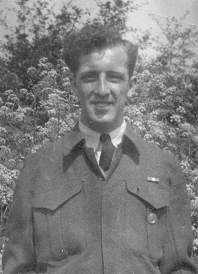
|
Canadian nose artist "Skip" Rutledge joined the RCAF on 17 October, 1940 and after three weeks in No.1 Manning Depot in Toronto, moved to St. Thomas, Ontario for Air Engine Mechanic training. His first posting took him to No. 3 SFTS at Calgary, Alberta and then in April 1942 he was posted to No. 420 (Snowy Owl) Squadron based at Waddington, Lincs., England. Skip painted his first nose art on a Handley-Page Hampden Mk. I. It featured the profile of a native Indian in full head-dress. |
No. 420 Squadron was posted to North Africa on 16 May 1943. By this time the squadron was flying the Vickers Wellington B. Mk. X "tropicalized" aircraft in support of the invasions of Sicily and Italy. While in North Africa, Skip painted a total of five Wellington bombers with nose art. One was named "The Swoose" and another called "Scarlet Harlot." But his first impressive Wellington nose art carried no name, just a stork with the tail of a Wellington bomber. In place of a baby, the stork carried a large orange bomb for the enemy. A replica of this nose art painted by Clarence Simonsen now hangs in the museum. 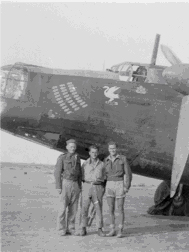 L to R - Ian Noble, Howard Nopper and Bill Wollett under "The Swoose" Note - the Canadian Maple Leaf painted under pilot position. Skip painted this on most of his aircraft. |
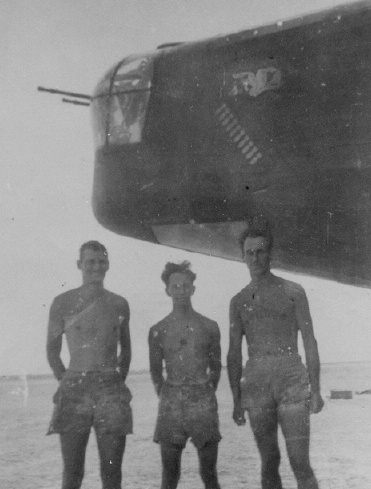 |
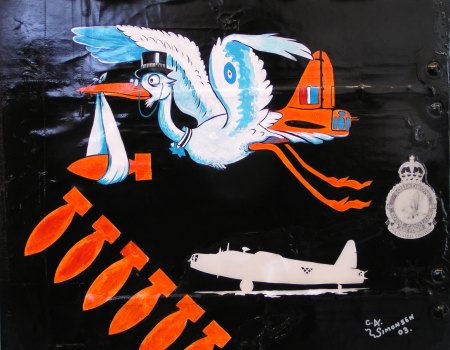
The squadron returned to England from Tunisia between 17 October and 5 November 1943, arriving at Dalton, Yorkshire where they remained for one month. On 12 December 43, No 420 Squadron was transferred to Tholthorpe, Yorkshire, where they remained based until the end of the war.
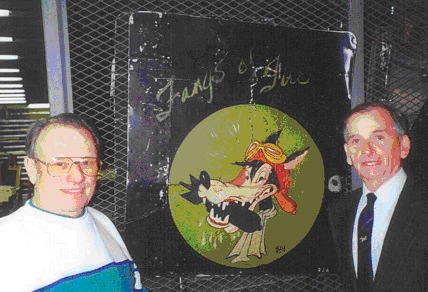
|
Artist Rutledge painted four Canadian Halifax Mk. III aircraft, beginning with "Birds of Prey" (serial NA509), "The Champ" (serial MZ587), "Pappy's Gang" serial LW575), and the most famous, "Fang's of Fire" (LV953). The original idea for this nose art came from a Walt Disney ad that appeared in the November 1944 issue of Saturday Evening Post magazine. Pilot Ray Lepp, Campbell River, B.C. (left) and Wireless Air Gunner Doug Draper, from Ottawa, Ontario stand by the original "Fangs of Fire" in the Canadian War Museum. Lepp's crew completed 30 operations, 19 of them aboard "F for Freddie", but one trip was in "Fangs of Fire." |
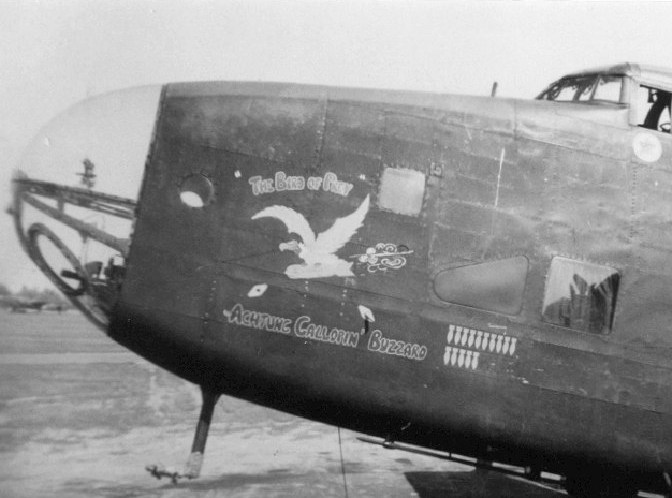
The museum is honoured to display Skip Rutledge's suitcase
that carries No. 420 Squadron's symbol and a record of his travels during World War II.
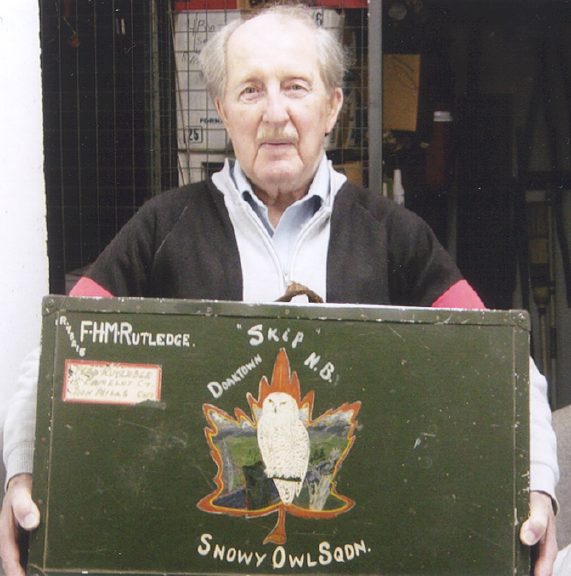
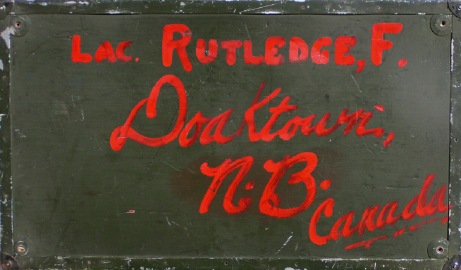
End of suitcase. ===> |
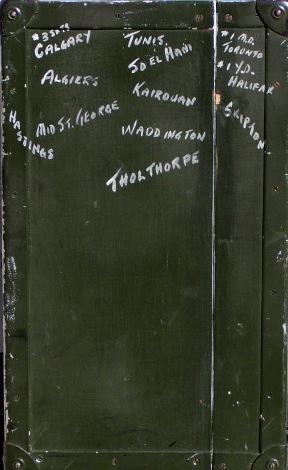
|